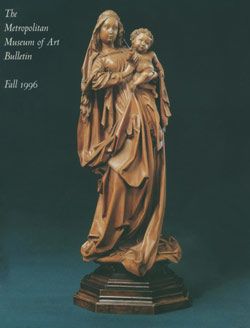Rakan
Nanbokuchō period (1336–92)
Not on view
Arhats (known in Japanese as rakan) are legendary disciples of the historical Buddha, Shakyamuni. Following his example, they attained enlightenment through their own efforts. Like the disciples of Jesus, they remain in the world to preserve the teachings of the historical Buddha until the coming of the future Buddha, Maitreya. They are invariably portrayed in outdoor settings, often attended by animals both familiar and fantastic.
Images of rakan hold a special place in Zen Buddhism, where they are honored as exemplars of the individual spiritual quest. They are usually envisioned in groups of sixteen, eighteen, or five hundred and are hung flanking an image of Shakyamuni. These two can be presumed to have come from a set of sixteen, the most common format. They are closely modeled on paintings (now in the Tokyo National Museum) that were signed by a Chinese professional painter, Jin Dashou, at the end of the twelfth century in Ningbo, the port in Zhejiang Province through which Chinese teachers and Japanese students of the Zen sect traveled. The Chinese mien of the figures and the garden setting are features of an iconographic tradition attributed to Li Gonglin (ca. 1040–1106), the most celebrated figure painter of the Song dynasty.
This image cannot be enlarged, viewed at full screen, or downloaded.


